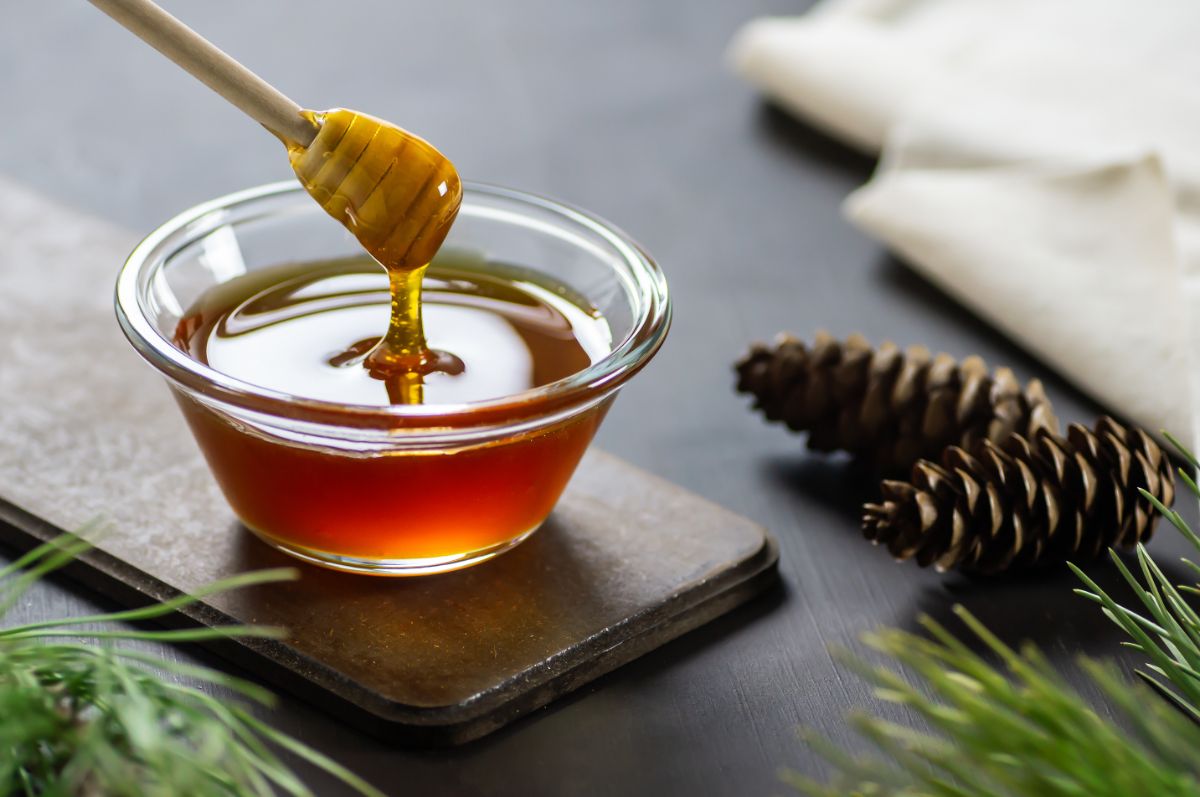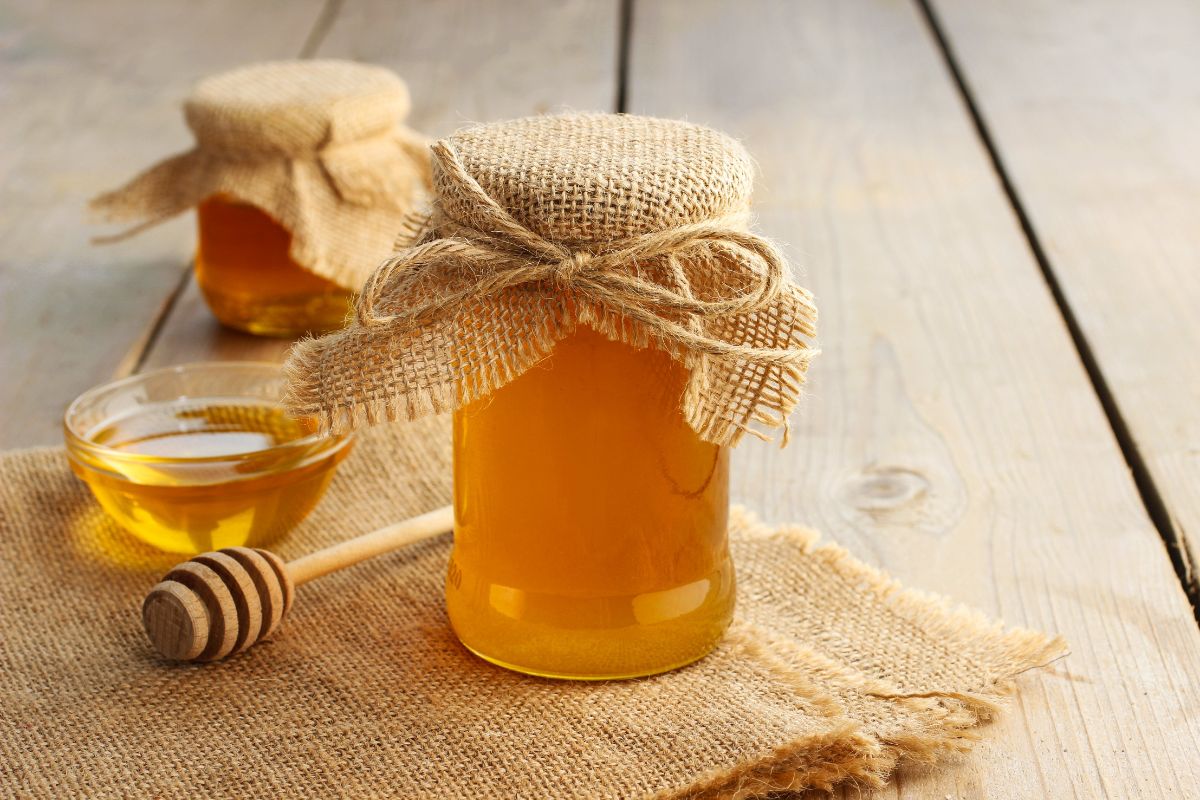Honey is considered a healthier alternative to sugar. This fact is true in some cases, but there are some essential things to know about natural sweetener before adding them to your bread dough.

Honey can kill your yeast if it has been processed with an additive to prevent mold from growing on it. Honey does contain natural antibacterial qualities that can also kill the yeast, and usually does if you use it in the ‘proofing’ process.
Another downside to using honey in your yeast bread is its composition of sugar. Honey is mainly sugar from agave nectar or fructose, while your table sugar is sucrose. Too much honey can kill the gluten in a recipe just as too much sugar can. The upside to using honey is the interesting flavor it can add to your bread.
*This article may contain affiliate links. As an Amazon Associate, I earn from qualifying purchases. Please take that into account.
- Dutch oven
- Large mixing bowl
- Measuring cups and spoons
- Bread thermometer (fancy or a budget one)
- Scoring lame
Extra (nice to have):
- Kitchen scale
- Dough scraper and bowl scraper (yes, they are different)
- Cooling rack
- Baking stone (you don’t need a dutch oven if you use this)
👉Learn how to make bread and pizza with this awesome book.
Health Benefits From Using Honey
A healthier option to sugar is honey. Since ancient times, it has been known honey contains enzymes, antioxidants, minerals, and vitamins. When you purchase honey from a local merchant, it can help reduce seasonal allergies.
This benefit is possible because you are exposed to small amounts of flower pollen growing in your area. Honey has also been known to kill antibiotic-resistant bacteria such as salmonella and e. Coli.
Tips to Follow if Using Honey in Baking
It does provide some attributes to baked goods. It can give your bread’s crust a golden color, add a different flavor, or it can help make your bread moister. The distinct taste or flavor gained will depend on the flowers the bees took their nectar from such as sunflowers, mixed flowers, clover, etc.

If you have decided to use honey in your bread, these are some tips to follow:
- Honey can be substituted using one-for-one equivalents. Whatever amount of sugar your recipe called for in waffles, pancakes, or yeast bread, you can use the same amount of honey.
- If your recipe says to add one cup of sugar or more, you should reduce the other liquids in the recipe if you are substituting the sugar for honey. This reduction means if you use honey, then reduce the other liquids by ¼ cup for each cup of honey added.
- When baking cookies with eggs, or other recipes that do not call for other liquids, add more flour by two tablespoons for each cup of honey added.
- If you do not want your bread to become too brown, lower the baking temperature by twenty-five degrees. This lowering of temp is if you are choosing to substitute the honey, and the original recipe did not call for it.
- Granulated sugar can play an important role in holding air in the batter for some recipes. If substituting honey makes this unsuccessful, you may want to use a half sugar, half honey combination.
- It is is sweeter than sugar due to its high fructose content. You may find it gives your bread a sweeter taste than desired. To reduce the sweetness, you can reduce the amount of honey by using ½ or ¾ as much compared to sugar requirements.
- Before you begin to measure your honey, you should spray or oil the measuring cup first to make it easier for the honey to slide out.
- If your honey has become crystallized, you can re-liquefy it by removing the container’s lid and warming the container in hot water. You can also return the honey to liquid form by microwaving it on high for a few seconds in a microwave-safe container.
- If you are going to freeze your bread once it is baked, honey has some scientific benefits. In bread recipes, the honey has a hygroscopic effect, which is more than sugar provides. The honey takes in and retains moisture from the air. It is said to keep homemade bread moist much longer. Coconut oil and honey are both able to slow down the growth of mold in a homemade loaf of bread.
Why Baking With Honey is Not Always Good
When you bake your loaf of bread with honey, the baking process destroys the beneficial qualities of the honey. For this reason, you should use the ‘raw’ product.
Most honey you find in the supermarket has been pasteurized at a high temperature, which kills off the raw enzymes, which is what makes this product healthy. So using the processed honey is not always a good choice for your bread making.
The worst thing for processed honey is heating it more at temperatures needed to bake your bread. You will retain some of the minerals, but the living enzymes you get from the raw honey will all be destroyed.
The baking process of honey can also change its taste, producing a loaf of bread that may taste bitter or leave a bitter aftertaste.
Another factor to consider when heating processed honey is it can allow for mucous to form in your body. This mucous can create congestion, respiratory problems, weight gain, acne, blood glucose imbalances, skin conditions, and acne.
What is ironic about the honey products is they are also used to reduce excess mucus when used in natural cold remedies. This fact is what makes it so important that you use ‘raw’ honey if using in your bread recipes.
Difference Between Raw and Processed Honey
Raw honey is said to have more benefits over the honey found in the grocery store shelf. Not all claims have been proven, but there are some definite differences. Pasteurization is what causes the most significant differences between these two products.
When pasteurized at high temperatures the honey’s yeast is killed to prevent fermentation. This process also keeps the honey from becoming granulated, so it looks better to consumers.
When looking at the two honey productions, you will see the processed honey has a nice smooth appearance and is uniform in color. Raw honey is milky looking and contains granules that you can melt in warm water.
The raw honey contains all of the nutrients necessary for maintaining good health, and it has a better smell, taste, and darker color.
Are There Alternative Sweeteners For Baking?
Maple syrup is a good alternative for sweeteners when you bake. It can withstand heat and keeps it’s beneficial minerals while baking.
Stevia is another alternative sweetener or minimally processed cane sugar such as rapadura or sucanat.
There are some recipes where you will see dates or smashed bananas being used as sweeteners.
